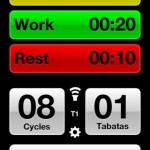As you’ve probably guessed this is another post in my “fat as debt” series.A topic I’ve probably written about ad nauseum However, just because I’m beating a dead horse doesn’t mean the message is any less important.The EXACT same things that are making us fat are also making us deeply in debt and Vice Versa.In fact, we (at least North America) largely live in a debt-based society, and it shows in the way we approach both food and money.Long gone are the days of saving for something you want – These days you simply check to see if you have enough room on your credit card, then you buy it.Typically this is done after some self talk about ‘deserving it’ or how ‘good of a deal it is’, then promising to yourself that you’ll pay it back as soon as possible.This exact same mentality is apparent in how we eat.It’s perfectly acceptable to diet AFTER a big celebration of eating, but it is not acceptable to diet before, in anticipation of a big eating celebration.Even though Advent, the 3-4 week period for before Christmas, was originally a fast to PREPARE for the feast, essentially doing the food equivalent of saving up FIRST before buying something we really want.Instead we approach food like we do our expenses… We convince ourselves that we deserve it or need it, and that we will simply pay it off (*burn it off) later.But in reality there is nothing wrong with saving up first, just as there is nothing wrong with preparing when you know there will be a feast.Somehow we’ve been taught that this is the wrong approach.Prepare for big purchases… Whether it’s a new couch, or a Super Bowl Feast.BPTagged as: dieting after a feast, fasting after feasting, Feasting
Link to article –
More fat, more debt | Brad Pilon's 'Eat Blog Eat'
















 For now classes are 6pm and 640pm at 2840 Wildwood st in the Boise Cloggers studio.
Book your class NOW!
click this ==>
For now classes are 6pm and 640pm at 2840 Wildwood st in the Boise Cloggers studio.
Book your class NOW!
click this ==>








